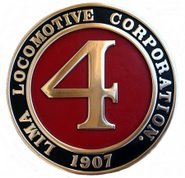Ed note: Keith wrote this article during Thanksgiving weekend and sent to me 10 days ago. So we're already three weeks into his timeline. At this writing, the crew has completed 60 percent of the projects noted below.
By Keith Berry, Vice-President

The Diamond and Caldor rebuild project is in its 14th year! Looking back, it's obvious where the years went, a perceived short term refurbishment has turned into a major recovery/rebuild project.
Removal and rebuild of major assemblies led to the reconditioning or replacement of parts, which required tools, engineering drawings and support work in pattern making casting, and machining. The truck assemblies, water tank, cab and appliance overhaul has consumed a lot of time, given we work one day a week.
Were fond of telling visitors and those monitoring our work that were "85% finished, and 50% done!" Why? Because we've reached the time for re-assembly and fitting up all the small stuff like mounting brackets, supports, more appliances, brake rigging and such, which is almost invisible but necessary to finish the project.
Recently,
Steve Karoly suggested we need a pathway out of the seemingly endless procession of tasks, and we need to regain a sense of organized momentum and staying focused. During the summer, we labored over things like an oil tank lid-hinges, handles and the oil level dip stick (why do people take away all this stuff from an exhibited locomotive?).

So, when you see an oil tank in place on the locomotive, you do not see all the stuff related to installation for operation rather than just cosmetic display.
I agreed with Steve, and pondered the work remaining through visiting our photographs of the No. 4 to identify remaining parts and installations. I decided to push a timeline on these items, something realistic if we stay organized and work as a team. I decided we should attempt the following, to complete ten items in ten weeks.
10 Projects in 10 weeks
Here then are the top ten assignments, not including the on-going machine shop work by
Sam Thompson,
Bill Rodgers and
Harold Tilton on the steam engine valves and the drive shaft rebuild.
1) Fabricate the lower ladder mounts for the rear ladder on the water/oil tanks, ready for riveting (are you reading this,
Doug Youngberg?). [
done]
2) Fabricate the oil tank retaining rod mounts, ready for riveting (are you still reading this Doug?).
3) Fabricate some base mounts for the new rear deck tool box, mount the tool box to the locomotive deck. [
done today]

4) Fabricate new support braces for the engineer side steps, correcting an original poor design as evidenced in photos. [
fabrication and painted done, waiting for installation]
5) Prep and paint new oil tank dip stick and bolt on the fireman side steam water pump on the running boards. [
done]
6) Bolt down the rear sand box to locomotive deck. [
holes drilled, ready to string sand tubes]
7) Locate, prep and paint drive shaft covers. [
done]
8) Locate and drill water tank mounts, ready for riveting (still with us Doug?).
9) Fabricate 14 each 5/8-inch eye bolts for the safety chains on the brake beams. [
projected started today, measuring and materials list completed, ready to roll and looking for December completion]

10) Locate position and drill the smoke box for the builders plates, that were cast and finished to perfection by
Richard Wright in Kentucky. [
on-line for next Saturday]
11) Fabricate a smoke stack cover with handle as in photos, which will serve us with steam operation.
OOPS! That is 11 items! See how this type of project goes, one project finished is replaced by another pending project, but the list needs to stay at 10 total items.
Our motto remains, "One part at a time, she goes back together," so now we need to "Get-'er-done!"
As of this date, 3 of the 10 projects are completed, and 3 more are underway. It appears several other projects will finish together on one day when we drill all future rivet holes in the water tank. Coordination of our time on Saturday is essential.
We'll provide a score card to you in mid-February. Thank you to our volunteer team for spending their time and energy on this project to serve our community in preserving the Diamond and Caldor No. 4 Shay locomotive.
Drop by some time and say hello, check out our progress.
 I suppose you could say, "Old rail never dies. It gets reused."
I suppose you could say, "Old rail never dies. It gets reused."














